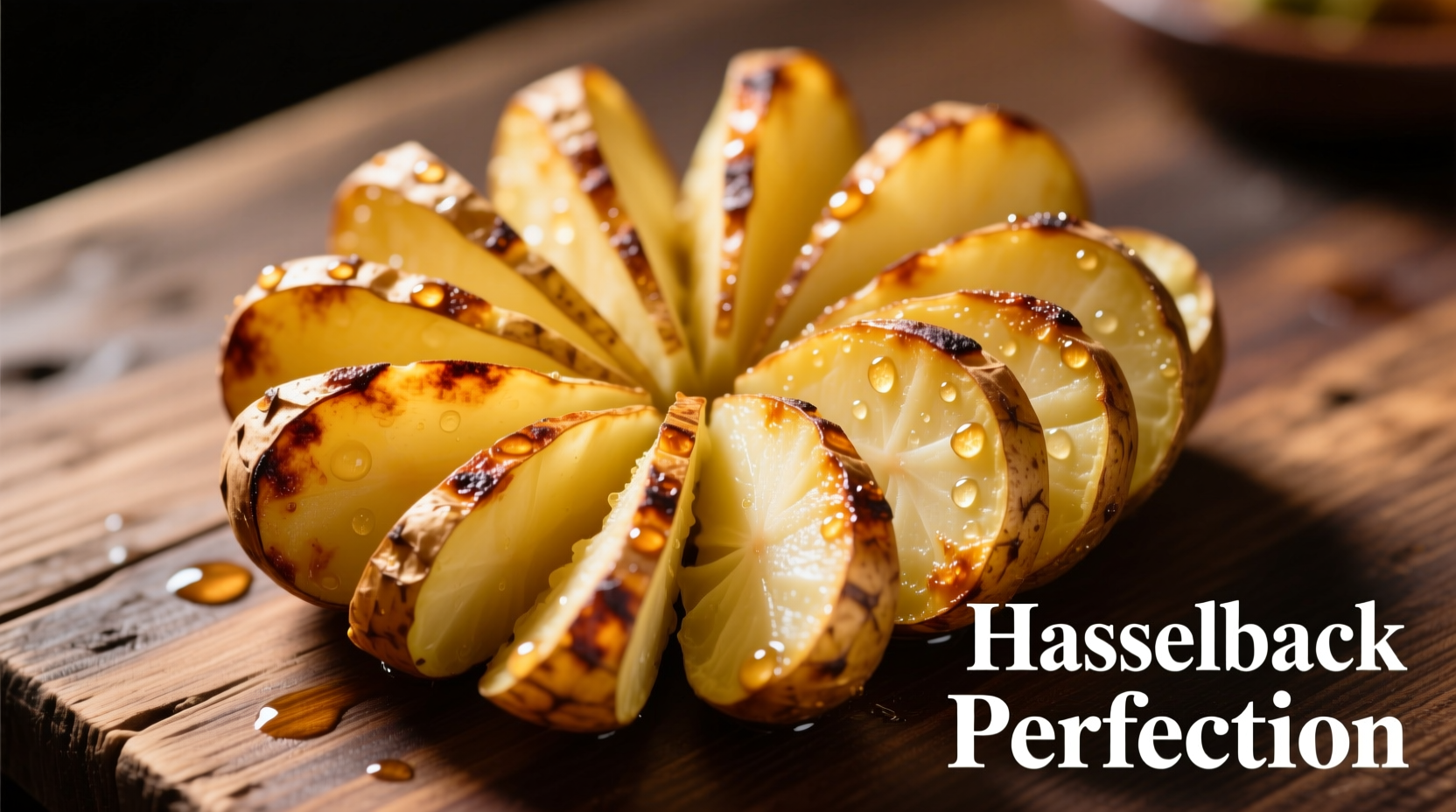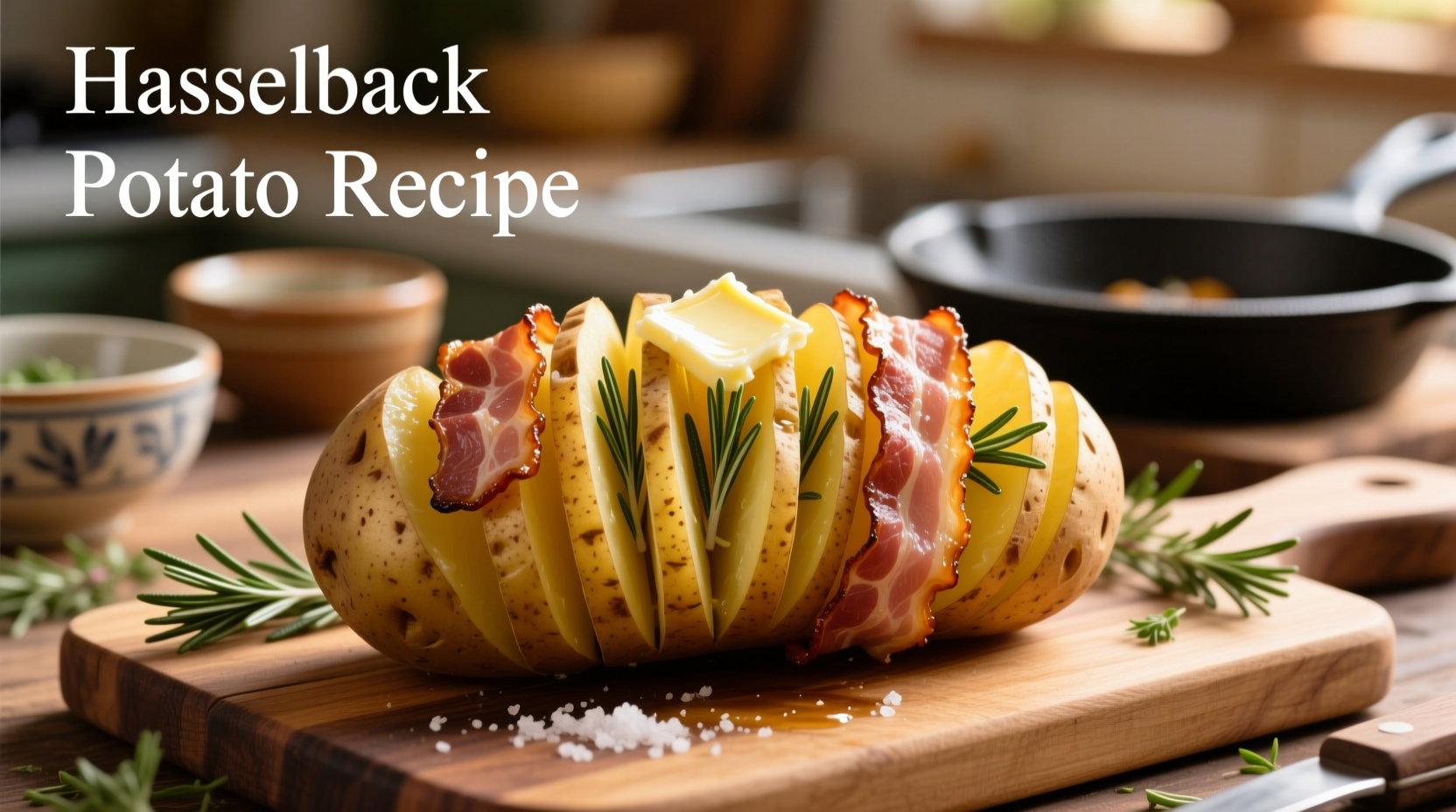The Ultimate Hasselback Potato Recipe for Perfectly Crispy Results
If you've ever struggled with unevenly cooked or collapsed hasselback potatoes, you're not alone. This Swedish-inspired technique transforms ordinary potatoes into an impressive side dish with minimal effort. The secret lies in precise slicing and proper baking conditions that create those signature accordion folds with crispy edges and tender centers.
What Makes Hasselback Potatoes Special
Hasselback potatoes originated at Stockholm's Hasselbacken restaurant in the 1950s, named after its location on Hasselbäcksgatan street. Unlike traditional roasted potatoes, this method creates maximum surface area for crispiness while maintaining structural integrity through careful, partial slicing.
| Historical Timeline | Key Development |
|---|---|
| 1953 | First created at Hasselbacken restaurant in Stockholm |
| 1970s | Spread throughout Scandinavian cuisine |
| 2010s | Went viral globally through food blogs and social media |
| Present | Featured on menus worldwide with numerous creative variations |
Essential Ingredients for Hasselback Potatoes
You only need five basic ingredients for authentic hasselback potatoes:
- 4 medium Yukon Gold potatoes (about 6-7 oz each) - Their balanced starch content ensures crisp edges with creamy centers
- 3 tablespoons melted butter or olive oil - Butter provides richer flavor while oil creates extra crispiness
- 2 cloves garlic, minced - Fresh is essential for authentic flavor
- 1 teaspoon fresh rosemary, finely chopped
- Salt and freshly ground black pepper to taste
The Hasselback Slicing Technique: Step-by-Step
Proper slicing is the most critical step in making successful hasselback potatoes. Follow these steps for perfect results:
- Prep your potatoes: Scrub potatoes clean but don't peel. Pat completely dry—moisture prevents crispiness.
- Stabilize for safe slicing: Place a chopstick on each side of the potato. This prevents cutting all the way through while creating even slices.
- Slice carefully: Using a sharp knife, make 1/8-inch slices across the width of the potato, stopping at the chopsticks. Aim for 15-20 slices per medium potato.
- Expand the slices: Gently spread the potato apart to create space between slices—this allows heat circulation for even cooking.

Professional Baking Method
Follow this precise baking process for restaurant-quality results:
- Preheat oven to 425°F (220°C) with rack in the center position
- Prepare baking sheet: Line with parchment paper or lightly grease
- Season potatoes: Brush with melted butter mixture, ensuring it seeps between slices
- Position correctly: Place potatoes upright with cut sides visible (not lying flat)
- Bake 45-55 minutes: Until deeply golden and crispy, rotating pan halfway through
- Finish under broiler: 2-3 minutes for extra crispiness (watch carefully)
Avoid These Common Hasselback Potato Mistakes
Even experienced cooks make these critical errors that ruin hasselback potatoes:
- Slicing too deep: Cutting all the way through destroys the fan structure. Use chopsticks as guides.
- Using wrong potato variety: Russets work but Yukon Golds provide superior texture and flavor.
- Insufficient seasoning between slices: Brush oil/butter mixture thoroughly between each slice.
- Overcrowding the pan: Leave 1-inch space between potatoes for proper air circulation.
- Incorrect oven temperature: Below 400°F won't crisp properly; above 450°F burns before cooking through.
Context-Specific Success Factors
Hasselback technique works best under specific conditions. Understanding these boundaries prevents disappointment:
- Best potato size: Medium (6-7 oz) works perfectly—smaller potatoes collapse, larger ones cook unevenly
- Optimal thickness: 1/8-inch slices create ideal balance between crispiness and structure
- Altitude adjustment: Above 3,000 feet, increase temperature by 15-25°F and extend cooking time
- Not suitable for: Very starchy potatoes (like russets) without additional moisture control
Delicious Variations to Try
Once you've mastered the basic technique, experiment with these popular variations:
- Cheesy hasselbacks: Sprinkle grated parmesan between slices during the last 15 minutes of baking
- Garlic-herb butter: Mix 2 tbsp softened butter with 3 minced garlic cloves and 1 tbsp each of rosemary and thyme
- Spicy version: Add 1/4 tsp cayenne pepper to the butter mixture for heat lovers
- Vegan option: Substitute olive oil for butter and use nutritional yeast instead of cheese
Serving and Storage Tips
For best results, serve hasselback potatoes immediately after baking when crispiest. They pair beautifully with roasted meats, grilled fish, or as part of a vegetarian main course with a dollop of sour cream and chives.
Leftovers can be stored in an airtight container in the refrigerator for up to 3 days. Reheat in a 400°F oven for 10-15 minutes (not microwave) to restore crispiness. Freezing is not recommended as it destroys the delicate texture.
Why This Method Works: The Food Science
The hasselback technique maximizes the Maillard reaction—the chemical process responsible for browning and flavor development—by dramatically increasing surface area. The partial slicing creates hundreds of thin edges that crisp beautifully while the connected base ensures even heat distribution throughout the potato. This method achieves what regular roasting cannot: maximum crispiness with perfectly tender interior.











 浙公网安备
33010002000092号
浙公网安备
33010002000092号 浙B2-20120091-4
浙B2-20120091-4